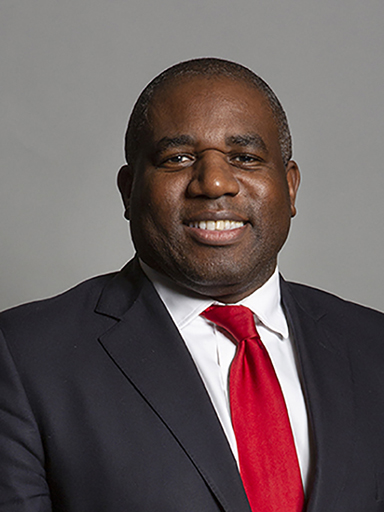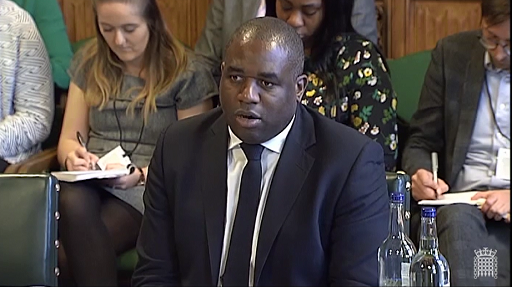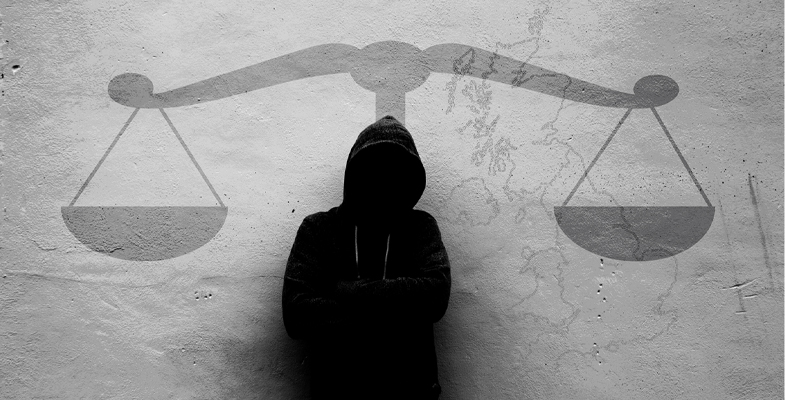2 Injustice and youth justice
You will now explore the ways in which race, racism and ethnicity shape young people’s experience of youth justice, crime, policing and punishment. Young people from a Black, Asian and Minority Ethnic (BAME) background constitute a small minority (approximately 14 per cent) of the wider UK population (Lammy, 2017). However, their disproportionate presence in youth justice systems has undermined confidence in the system and increased concerns about the persistence of racism in the UK.

In 2017 a Ministry of Justice analysis of youth custody revealed that young black people were nine times more likely to be locked up in England and Wales than young white people. In custody the proportion of young men from BAME backgrounds was approaching 50 per cent and the general reduction of the numbers of children and young people in youth custody was a long way from being equally distributed across ethnic groups.
Activity 2 The Lammy Review
Watch this video of David Lammy MP speaking to a Parliamentary Committee on his concerns about race.

Transcript: Video 1
Lammy mentions that there has been activity in response to his review but he is worried that it may not result in better outcomes, and that things have actually got worse.
Make a list of some outcomes you can think of that would suggest to you that things are getting better (for example, ‘fewer BAME young people being sent to prison’).
Discussion
Although fewer BAME young people being sent to prison would probably suggest things were getting better and might be seen as a positive outcome, the question of proportionality is also very important. If there is a general decline in rates of custody (as there has been recently) but the rate of decline is much slower for BAME young people than for other ethnicities, the questions of unfair discrimination would remain just as urgent.
David Lammy MP was prompted into action by nearly a decade of improving outcomes for white children and young people in youth justice while there was a deterioration in outcomes for BAME children. For example, a general decline in the number of arrests of young people by the police in England and Wales in 2016 was widely welcomed. However, the figures also revealed, of the 88,000 child arrests made in 2016, BAME children accounted for 26 per cent of them (Howard League, 2017). Even more worrying was evidence that more than a third (36 per cent) of children detained overnight in police cells in England were from BAME backgrounds (CRAE, 2017).
The Lammy Review has quickly become the reference point for people researching the effects of race and racism in the youth justice system. The next activity gives you an opportunity to become more familiar with this research.
Activity 3 Arresting figures to make you stop and think
a.
a) Be firm and fair
b.
b) Explain or reform
c.
c) Non-discrimination
d.
d) Transparency
The correct answer is b.
- For each of these three police forces, match:
- i.the proportion of BAME people within the general population for their area, and
- ii.the proportion of BAME young people arrested in their area.
Using the following two lists, match each numbered item with the correct letter.
Metropolitan police
Bedfordshire
West Midlands Police
a.Arrests 42%; GP 23%
b.Arrests 41%; GP 30%
c.Arrests 60%; GP 40%
- 1 = c
- 2 = a
- 3 = b
a.
Cumbria
b.
Norfolk
c.
Thames Valley
The correct answer is c.
Discussion
The Lammy Review explains that disproportionality in ethnic data does not necessarily mean that unfair discrimination or poor practice is at work. The report calls for explanations to be provided and, if there are no reasonable or fair explanations for the disparity, for reforms to be enacted.
If the data provided is poorly collected (as in the case of Norfolk and Suffolk) or absent (as in the case of Thames Valley), then it is difficult for a police force to provide a reasonable explanation for its practice. This can lead to suspicion and a lack of trust that it is acting fairly and capable of challenging racist practice.
The evidence of disproportionality is presented in numbers that are important but do little to reflect the complex realities of life. The experience of unfairness and prejudice for children and young people can have long lasting effects. Each small episode of being made to feel different, less worthy of respect, or of being likely to behave in a certain kind of way because of your ethnicity or by white people’s reactions to you conditioned by racism, can build up over a child’s life. These small injuries or ‘microaggressions’, as they are sometimes called, may amount to confusing feelings as a child tries to make sense of their life and grow into adulthood. This is sometimes a lonely and isolating experience, but it often becomes something more.
As children grow and explore their potential, their common experiences and feelings, peer groups and collective activity become more important to their lives. Pushing boundaries, exploring possibilities and stretching limits can result in troubles with the law and law enforcement. It can involve harmful behaviour, cruelty and worse. All too often for young people from black and minority ethnic backgrounds, when these lead to conflicts with law enforcement, these actions come to define them in the media and wider cultures. The almost automatic assumption within majority white ethnic groups that ‘black means trouble’ is widespread and influential. This is an injustice with far-reaching consequences.
